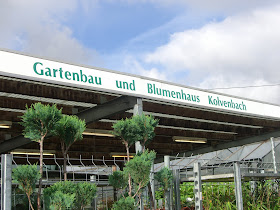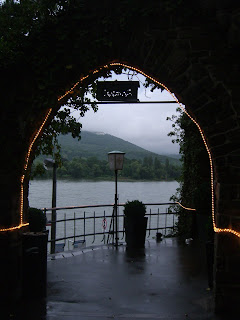
We toured a farm belonging to Dr. Ludwig von Heyl. Roman artifacts have been found on the farm that are over 2,000 years old. Today the von Heyl family operates this farm which is called "Nonnenhof". It is an obviously historical farm and is a rare find, with 400 contiguous hectares. The oldest buildings on the farm date back to the 1600's, while the newest are from the 1800's. This farm has a historic designation, so all of the improvements Dr. von Heyl makes must match the original style of the buildings. A challenge, but one he has met with innovation and creativity, including taking the roof off of one of the buildings, inserting grain bins, and replacing the roof on this building...

You can find more general information about this farm visit at Jeff Sutton's blog at:
However, I wanted to add an extra tidbit. Dr. von Heyl, who has his Ph.D. in ag. engineering, was the first to use a no-till drill in Germany. (Note: no till simply means not tilling the soil. This improves soil health and allows earth worms and microbes in soil to thrive. I'll blog more on no till later).
He has been using this drill to plant all of his grains for about 20 years.



I sincerely enjoyed visiting with Dr. von Heyl (above) and was excited to find that he has been using similar no-till and cover crop techniques to those which we employ on the Wilson Farm (in certain circles, my husband is even known as "Mr. No Till" :)
I am grateful to our hosts with the German Farmer's Association whom arranged visits with such innovative producers- I am learning A LOT!















































